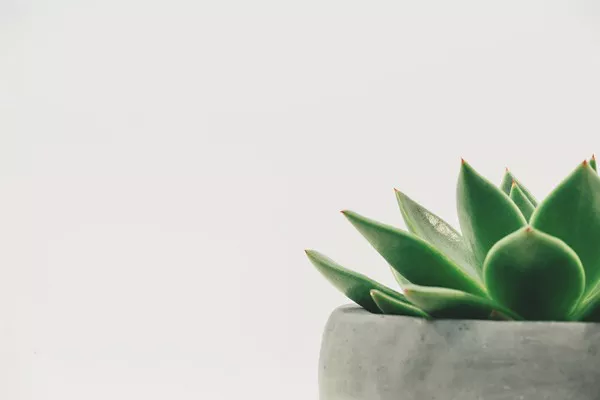Caring for succulents is a rewarding experience, thanks to their unique and captivating appearance. These hardy plants are known for their ability to store water in their leaves, stems, or roots, making them resilient to drought conditions. However, knowing when to water succulents is crucial to their health and longevity.
Understanding the Nature of Succulents
Before diving into the intricacies of succulent watering, it’s essential to understand the unique characteristics of these plants. Succulents are adapted to arid and semi-arid environments, where water is often scarce. They have developed specialized tissues to store water, allowing them to endure dry spells. This adaptation is why succulents thrive in well-draining soil and can withstand infrequent watering.
The Role of Water in Succulent Care
Water is a vital component of succulent care, as it plays a crucial role in their growth and overall health. Proper watering ensures that succulents receive the hydration they need while preventing issues like root rot, a common problem resulting from overwatering. Finding the right balance is key to keeping your succulents thriving.
The Golden Rule: Let the Soil Dry Out
The most fundamental principle for watering succulents is to let the soil dry out between waterings. Succulents are highly adapted to conserving water, and they prefer to be slightly dehydrated rather than overwatered. As a general rule of thumb, water your succulents when the top inch (2.5 cm) of soil feels dry to the touch.
Consider the Season
Succulents have distinct watering needs based on the season. Their growth cycles and water requirements can be divided into two main phases:
Active Growth (Spring and Summer): During this period, succulents are actively growing and require more frequent watering. Monitor the soil moisture regularly and water when the top inch of soil has dried out.
Dormant or Resting (Fall and Winter): In the fall and winter, many succulents enter a dormant or resting phase. Their water needs decrease significantly during this time. Reduce the frequency of watering to prevent overhydration. In cooler climates, it may be necessary to suspend watering altogether during the winter months.
Factors Influencing Watering Frequency
Several factors can affect how often you should water your succulents:
Climate and Location: The local climate plays a significant role in determining how frequently you should water succulents. In hot, dry climates, you’ll need to water more often than in cooler, more humid areas.
Container Type: The type of container in which your succulents are planted can impact their water needs. Terracotta pots, for example, allow for faster moisture evaporation than glazed or plastic containers.
Soil Composition: Well-draining soil is crucial for succulent health. A succulent-specific potting mix or adding perlite to standard potting soil can improve drainage and help prevent overwatering.
Plant Variety: Different succulent species have varying water requirements. Research the specific succulent species in your collection to tailor your watering schedule accordingly.
Observing Succulent Signs
Succulents often provide visual cues that indicate when they need water:
Wrinkled or Shriveled Leaves: When succulents lack sufficient moisture, their leaves may appear shriveled or wrinkled. This is a clear sign that it’s time to water.
Color Changes: Some succulents, like Echeveria, exhibit changes in leaf color when they need water. Their leaves may become more translucent or take on a slightly translucent appearance when they’re thirsty.
Leaf Drop: In extreme cases of dehydration, succulents may shed their lower leaves to conserve moisture. If you notice leaves dropping, it’s a sign that you should water your succulent.
Slow Growth: Succulents that aren’t getting enough water may exhibit stunted growth. If you notice that your succulent isn’t growing or producing new leaves, consider adjusting your watering schedule.
Watering Techniques for Succulents
Proper watering techniques are essential to prevent overwatering and ensure that your succulents receive the hydration they need:
Water at the Base: When watering succulents, it’s best to water directly at the base of the plant. Avoid wetting the leaves as this can lead to rot and fungal issues.
Use a Soaker Hose or Drip Irrigation: For outdoor succulent gardens, consider using a soaker hose or drip irrigation system. These methods deliver water directly to the soil, minimizing the risk of overwatering.
Water Early in the Day: Watering in the morning allows the soil to dry out during the day, reducing the risk of nighttime moisture-related problems.
Water Slowly: Water your succulents slowly to allow the moisture to penetrate deeply into the root zone. This promotes healthy root development.
Use a Moisture Meter: If you’re unsure about the moisture level of your succulent’s soil, you can invest in a moisture meter to provide accurate readings.
Seasonal Adjustments
As mentioned earlier, succulents have varying water requirements throughout the year. Adjust your watering schedule accordingly to meet the changing needs of your plants. During the active growth phase, be vigilant about checking soil moisture levels, and in the dormant phase, reduce watering frequency significantly.
Avoiding Common Watering Mistakes
To keep your succulents healthy, it’s important to avoid common watering mistakes:
Overwatering: Overwatering is one of the most common problems with succulents. Remember that it’s better to underwater than overwater. Always allow the soil to dry out before watering again.
Watering On a Schedule: Avoid watering succulents on a set schedule. Instead, let the soil moisture level be your guide. Different environmental factors can influence how quickly the soil dries out.
Using the Wrong Pot or Soil: Choosing the wrong pot or soil mix can lead to poor drainage and overwatering. Always opt for well-draining containers and soil specifically designed for succulents.
Conclusion
Successfully caring for succulents involves a delicate balance of providing adequate moisture while preventing overwatering. By understanding the unique nature of succulents, observing their visual cues, and following proper watering techniques, you can ensure your succulents thrive and remain healthy. Remember that the key to growing thriving succulents is to let them guide your watering schedule based on their individual needs. With patience and attentiveness, you’ll be able to enjoy the beauty of your succulent collection for years to come.


